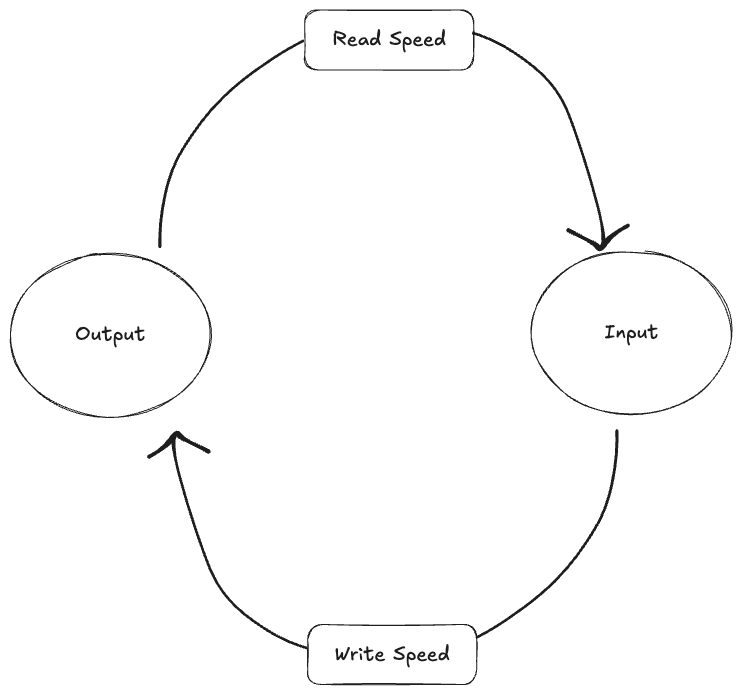“Thinking is cheap, so you should do more thinking, not less.” — Shreyas Doshi, Lenny’s Podcast
AI is not a replacement for thought, but is a tool for thinking more, faster. We have seen more and more AI-generated content — often referred to as slop — on the internet to a saturation point that is beyond grotesque. This is to be expected as the cost of content creation has hit zero, but where does that leave the aspirational content creators? For some content creators, it has led to an anti-AI movement. But that doesn’t lead to progress; there is good to be found in the tools; one just needs to know how to use them.
AI should be used to amplify our intelligence. In many cases, the latency of our current paradigms of writing are X times slower than our thinking. AI offers some tools that will allow us to close that gap, often significantly. Now let’s look at the process that it is to elevate.

The creative process can be boiled down to an input-output cycle: We create some content (output), revise it (input), think some more and edit (output) and revise it again (input), …. until we finish it - or, should I say, abandon it like all art is.
The next natural question is what is the hard limit of iteration (assuming we don’t have everything off to a machine or are plugged into it)? The answer to that is simply: the speed you read, listen, write/type or speak.
When it comes to the writing speed (getting content from thoughts to metaphorical paper), while we wait for Neuralink to work, speech is the fastest way to get that draft drafted. This is why I’m so excited about the OpenAI Realtime API for speaking, and why I’ve been such a power-user of speech-to-text with Whisper models and more recently, the Wispr Flow Mac app. I no longer have that frustration of ‘my thoughts are moving faster than I can externalise them’ as often. Speech-to-text has improved to the point that it can apply your style of speech to a text, correct common errors and leave you with a very clean script (if still not 100% written-style structure—unless you ask for it to be so). At the peak of flow (no pun intended), I’ve hit 198 words per minute, and average about ~140. From there, I just trim content downwards, which with the help of AI and some friends as proof-readers, is a rather efficient and fun task.
While speech is my go-to for getting thoughts down quickly or interacting with AI, there are times when a picture truly does paint a thousand words and can be even faster than attempting to put something down in words via any medium. The multi-modality available in tools like ChatGPT to not only parse these images but also allow for iterative refinement of the meaning I’m trying to convey.
When it comes to the read speed, for most people reading will still be much faster than listening. Personally, I’m much more partial to reading as I can jump between where I am in the output which avoids the linearity entrapment of audio—yes, it makes you focus, but you are constantly frustrated by the awkward and imprecise controls. If you want to see how fast you can really read, check out something like SwiftRead; but, for detailed revision (which tends to involve taking notes and sense-checking sentences or fragments multiple times), it will be hard to beat reading.
Great speaking and great writing requires the same thing: more time for thinking and iteration. It isn't about perfect; it is about giving you more time to think if you need it. By bringing the inputting and outputting times closer to the speed of thought using artificial intelligence, we buy ourselves more time to create pieces that are truly and authentically ours.
